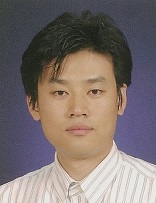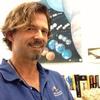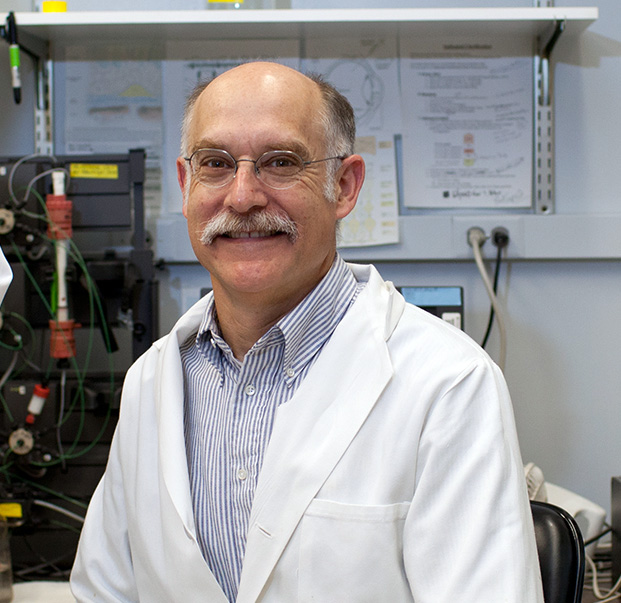

Research Terms
UCF researchers have invented a cerium oxide-based coating with anti-inflammatory/anti-oxidant properties that may delay or prevent osteolysis by reducing inflammation and the presence of free radicals while restoring the environment's electrochemical balance.
Although joint replacement surgeries have made remarkable progress, 10-15 percent of surgeries still fail due to high levels of free radicals, chronic inflammation from joint particles or debris generation through wear, and osteolysis (bone loss), or electrochemical dissolution/corrosion, requiring a growing number of revision surgeries. These types of operations are 40 percent more costly than primary total hip and knee arthroplasties, and more than $1 billion are spent on these procedures each year in the United States alone.
Unlike traps that only lure and kill insects, UCF researchers developed a low-cost Passive Insect Surveillance Sensor Device that also indicates whether an insect carries a specific infectious disease. This device can operate without electricity, has no moving parts, and does not require someone to send specimens to a lab. Thus, virtually anyone anywhere can use the device to better assess and respond to possible health threats from vector species in real-time (such as Dengue fever, Zika or chikungunya), even in the more remote regions of the world. Additionally, the device is modular and can be scaled to detect one or more targeted diseases simultaneously.
Technical Details
The device consists of the following:
When an insect infected with a targeted pathogen enters the trap and ingests the bait, the detector molecules bind to the pathogen protein and cause a colorimetric readout that is clearly visible.
Researchers at the University of Central Florida have developed compositions and methods for enhancing mosquito feeding behavior, which could aid in detecting mosquitoes and the pathogens they carry. Mosquitoes continue to be a significant threat to global health. Their ability to vector deadly diseases such as Zika, dengue and chikungunya make mosquito control an indispensable tool for protecting public health. Passive, unpowered devices are one method used to detect mosquitoes or pathogens that infect the mosquitoes. The devices can use DNA aptamer-gold nanoparticle conjugates (Au-aptamers) to enable colorimetric detection.
However, mosquito feeding is variable, with many mosquitoes showing insufficient feeding for colorimetric detection analysis. The UCF invention provides a solution to this issue by neuromodulating the various feeding receptors of mosquitoes to increase their feeding, making their engorged bodies easier to identify and assess.
Technical Details
In some example applications of the invention, the mosquito food source is 10% sucrose. The composition can further comprise 15 mM NaCl, 1 mM NaHCO3, 1 µM MgCl2, 5 µM ß,?-methyleneadenosine 5'-triphosphate disodium salt (ß,?-met ATP), or a combination of food sources. In another example, the mosquito neuromodulation agent may include an octopaminergic agonist, a MAO-B inhibitor, a 5-HT2A agonist, a TRPA1 agonist, a broad-spectrum neuropeptide receptor agonist, or a combination of agents.
Partnering Opportunity
The research team is looking for partners to develop the technology further for commercialization.
Aptamer–gold nanoparticle conjugates for the colorimetric detection of arboviruses and vector, RSC Advances, 31 Jul 2019, DOI: https://doi.org/10.1039/C9RA02089F.
The University of Central Florida invention describes a method of detecting reactive oxygen species (ROS) levels in a wound by engineering a color-changing patch that could be applied as a quick and visible indicator of oxidative stress. The majority of ROS are released by neutrophils and macrophages during the inflammatory phase of healing to kill foreign pathogens that may have entered the wound. If the inflammatory phase does not resolve in time, and the concentration of ROS exceeds the antioxidant capacity of the cell, the condition called oxidative stress results. Oxidative stress is mediated by radical ROS (superoxide anion, hydroxyl radical) and nonradical ROS (hydrogen peroxide [H2O2], singlet oxygen) and may inhibit cell migration and proliferation and cause tissue damage and perpetuation of inflammation.
While there are methods of measuring ROS levels currently in use, they require expensive equipment and time constraints that do not allow for quick, visual indication of the status of a wound. The patch created by the inventive group has an infusion of a color-changing reagent in the silk fibers electrospun into a patch, which can then be easily applied to a wound area. Since wound fluid contains micromolar concentrations of hydrogen peroxide (a non-radical ROS) as a result of oxidative stress, this change in concentration can be monitored by the color change in the patch. Experimental results show a color change based on the production of hydrogen peroxide, and in vivo studies showed color change within 24 hours due to wound oxidative stress.
Researchers at the University of Central Florida have developed an innovative nano-coating designed to capture and kill viruses on PPEs and other medical equipment. For example, the invention may be used to target SARS-CoV-2, the virus that causes the COVID-19 disease. The multilayer, polymer-based conformal coating can be applied to existing PPEs such as gloves, gowns, facemasks and disposable medical equipment made of various materials. Also, manufacturers can apply the coating to new equipment.Without the ability to inactivate viral pathogens, current PPEs serve only as physical barriers against disease, unable to fully protect medical workers and patients from infection. Shortages of PPEs compound the problem by requiring the potentially unsafe reuse of such equipment. The UCF nano-coating resolves these critical issues by enabling different surfaces on PPEs and medical equipment to capture and kill viruses. Additionally, the coating could be reapplied to surfaces to allow equipment reuse and mitigate PPE shortages.
Technical Details
The UCF invention is a nano-coating platform that consists of alternating layers of cationic and anionic polymers. The invention also includes methods for producing the multilayer coating. One example platform setup comprises a cationic nanoparticle layer grafted with oligomeric species that bind strongly to the surface of a virus, such as the SARS-CoV-2 spike protein. Thus, the composition enables the coating to “capture” the virus. The anionic nanoparticle layer contains two types of nanoparticles. One type of nanoparticle may up-convert natural/white light to ultraviolet light to emit local ionizing radiation that damages the genetic material of the virus. Another type of nanoparticle is hollow and could hold antiviral medications to “kill” the bound virus species.
Partnering Opportunity
The research team is looking for partners to develop the technology further for commercialization.
The University of Central Florida invention is a nanoceria-based solution for disinfectant use. Rapid Acting Disinfectant (RAD) Spray is a solution that can curb transmission of COVID-19 via contact with surfaces in a manner that is not currently available and is unique as a disinfectant spray and temporary film. Early studies have shown that these viruses can live between two to three days on most common types of surfaces. Most known available disinfectants, while able to neutralize many types of viruses, usually require a reaction time on the order of 30 seconds to 10 minutes.
After application, the proposed RAD Spray has the unique ability to create a temporary, continually disinfecting film left behind on the surface to which it was applied. The persistent disinfectant activity is due to the regenerative (catalytic) properties of Ceria Nanoparticles (CNP) nano-surface reaction sites, which allow for continued disinfection of a surface when new viruses come into contact with it. For surfaces where a permanent disinfectant film is not easily applied, this presents an attractive solution.
This invention presents a novel method for preserving the surface properties of metal nanomaterials—such as silver or gold nanoparticles—by chemically modifying their surfaces with protective molecular species. These nanomaterials are widely used in biomedical and industrial applications but are often vulnerable to degradation when exposed to reactive agents like cysteine or oxidative environments. Imagine if your antimicrobial nanomaterial could resist chemical attack simply by being dipped in a protective solution beforehand. This technology does exactly that—offering a simple, scalable, and highly effective way to extend the functional lifespan of sensitive nanomaterials.
Technical Details: The method involves a pre-incubation step where metal nanophase materials—such as silver-modified cerium oxide nanoparticles—are exposed to a solution containing molecules with a stronger chemical affinity for the metal than the environmental agents they will later encounter.
This surface modification is spontaneous at room temperature and does not require complex processing. The protective molecules can be tailored for specific applications by adjusting their chain length, polarity, or functional groups. The result is a robust, chemically shielded nanoparticle that retains its physicochemical properties even in challenging environments such as biological fluids, high-salt solutions, or oxidative media. The method is especially useful for preserving antimicrobial activity and optical properties in biomedical devices and diagnostics.
Researchers at the University of Central Florida have found a way to use cerium oxide nanoparticles to potentially protect mammalian cells against reactive oxygen species (ROS). ROS are extremely aggressive compounds which attack their surrounding tissue, causing irreversible damage over time. Currently no satisfactory remedies to prevent the eventual outcome of blindness from these ROS exist, until now.
Technical Details
Cerium oxide nanoparticles show great potential to treat retinal degenerative conditions since studies have shown they protect neurons from apoptosis induced by hydrogen peroxide (an extremely harmful ROS) in tests on the cellular (in vitro) and whole organism (in vivo) levels. By breaking down these ROS, cerium oxide nanoparticles effectively extend the longevity of neurons and any other cells within the body which are plagued by the accumulation of these harmful chemical species.
The University of Central Florida invention is a material synthesis process that enables companies to produce higher yields of metal oxide nanoparticles (NPs) while maintaining desired surface properties and without degrading the material. NPs offer a wide range of commercial applications, from catalysis to electronics to biomedicine. NPs are known for a high surface-to-volume ratio and are engineered for specific uses based on surface features (+3, +4), particle size, and other properties not achieved in bulk materials.
Processes for NP synthesis routinely use organic ligands (a molecule, an atom, or a group of atoms) to control particle size, growth and morphology. However, the ligands can be hydrophobic, highly insulating, and alter the NP crystal surface structure, thus limiting the NPs’ broader uses. As a solution, UCF researchers developed an approach for eliminating such drawbacks and removing organic ligands that show strong toxicity toward biological cells.
Technical Details
The UCF technology is a room-temperature synthesis method for scaling up quantities of metal oxide preparations such as cerium oxide or titanium oxide NPs. A two-phase (top and bottom) synthesis technique, the technology uses stripping agents (molecules) that mediate the removal of unwanted surface-bound ligands for bare particle surface (versus coated). Stripping agents may comprise sodium tetrafluoroborate (NaBF), trisodium phosphate (Na3PO4), and hydrogen peroxide (H2O2).
In one example application, the method includes dissolving the stripping agents in an aqueous solution, such as de-ionized water and biological buffers. A colloidal suspension immiscible with water is then added over the aqueous solution. During the top phase, vigorous stirring allows the stripping agents to interact with the particles and remove or replace the ligands. The particles then transfer to the bottom phase. The stripped organic ligands remain dispersed in the top phase, eliminating chances for final sample contamination.
Partnering Opportunity
The research team is looking for partners to develop the technology further for commercialization.
The University of Central Florida invention is a dynamic dialysis method for purifying multicomponent nanoparticles. Unlike other purification processes, the UCF invention offers a gentle approach to purifying and preserving the character of sensitive surface features needed for catalysis processes. For metal oxide nanomaterial compositions used in catalysis applications, the less stable surface features (such as surface hydroxyls, surface hydrates, vacancy structures, and so on) confer activity for the most desirable sets of reactions. Preserving the character of such features requires nanoparticle purification.
However, many purification methods apply substantial force to particle suspensions to isolate particle components. This may lead to losing or modifying valuable features (for example, through dehydration, reconstruction, or surface relaxation). Besides affecting surface reactivity, modifications of surface character can affect particle aggregation, hydrophilicity, and adhesion energy, among other properties essential to material performance in application.
Partnering Opportunity
The research team is seeking partners for licensing, research collaboration, or both.
Stage of Development
Prototype available.
The University of Central Florida invention enables companies to fabricate highly-reduced, stable ceria nanostructures with approximately 85 percent Ce3+. UCF’s temperature-controlled, reversible defect engineering platform for ceria nanostructures also enables thermal and reversible modulation of the Ce3+/Ce4+ ratio.
Ceria nanostructures are used for various applications due to their unique defect structure, enabling them to have regenerative oxidative properties. However, fabricating highly reduced, stable nanoceria has been challenging. UCF researchers have overcome those challenges by producing vanadium oxide-cerium oxide (VO2-CeO2) hetero-nano bilayers using atomic layer deposition (ALD). The research team coupled the VO2 peculiar low-temperature monoclinic to tetragonal phase transition (PT) with ceria nanostructures. XPS with in-situ heating revealed the Ce3+/Ce4+ ratio is increasing with heating to 68 C (phase transition temperature) and cooling back to room temperature, resulting in a remarkable Ce3+/Ce4+ ratio of 5.97 (Ce3+ approximately 85 percent) with CeO2- VO2 bilayer sample. This system also allows for a reversible physicochemical property with ceria.
Partnering Opportunity
The research team is seeking partners for licensing, research collaboration, or both.
The University of Central Florida has developed a technology for fabricating cerium nanoparticles (CNPs) suitable for biomedical applications. More importantly, companies can create CNPs that have the same material but comprise different properties. Cerium oxide nanoparticles (CNPs) have been proven to exhibit antioxidant properties attributed to their surface oxidation states (Ce4+ to Ce3+ and vice versa) mediated at the oxygen vacancies on the surface of CNPs.
Using a wet chemical synthesis method, the invention enables companies to advantageously create homogenous, small-sized (3-5nm) particles with stable dispersion. By allowing the use of different precursor cerium salts (and placing them in different chemical environments), the technology gives companies control over the final CNP properties and bioactivity for various CNP compositions.
Technical Details
The UCF technology consists of a method and composition for synthesizing cerium nanoparticles and producing CNPs with different properties by varying the cerium precursor salt. One example embodiment modulates the surface chemistry and antioxidant capacity of cerium oxide nanoparticles by reducing a cerium precursor salt with a chloride anion (CNP-Cl). The CNPs are stable with a predominant 4+ surface charge, but they also exhibit significant superoxide dismutase (SOD) mimetic activity, a valuable defense against oxidative stress in the body. CNPs with higher Ce4+ on the surface are not known to exhibit high SOD mimetic activity, favoring catalase mimetic activity instead. Ranging from 1 nm to 20 nm, the CNPs comprise a zeta potential of more than 30 mV. Other examples show a remarkable ability to scavenge radiation-generated electrons and are therapeutically effective for treating radiation exposure.
Partnering Opportunity
The research team is seeking partners for licensing, research collaboration, or both.
UCF scientists have discovered a method of doping nanoceria and other therapeutically valuable nanoparticles with rare earth metals for bioimaging and drug development applications. Nanoparticles are increasingly being used in the biological sciences for various therapeutic and research purposes. Nanoceria, for example, is a potentially powerful "nano-therapeutic." It has been shown to provide neurological protection, guard from radiation damage and it also exhibits Reactive Oxygen Species (ROS) scavenging properties. Little is known about where these nanoparticles locate within the human body. They are difficult to detect due to their small size and ability to traverse within affected cells. For these reasons, the need to track, locate and understand these nanoparticles within cells and biological systems are growing. It is possible to dope these nanoparticles with tags that will absorb UV light and emit in the visible spectrum, but there are several downsides to this. UV light has a high potential of damaging or even killing the very cells which are being studied. Additionally, these cells are prone to fluoresce themselves when exposed to UV light, distorting results.
Technical Details
After doping a therapeutic candidate using this technique, the compound will absorb infrared light and emit visible light through the process of up-conversion. This allows for easier identification, tracking and evaluation of the nanoparticle's functionality.



















































































































































































